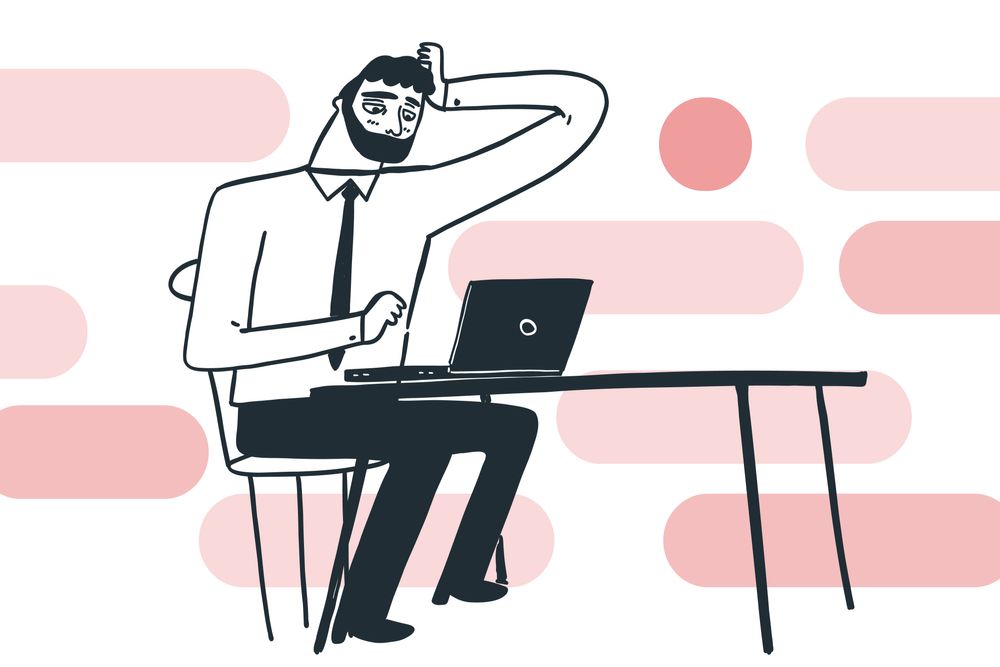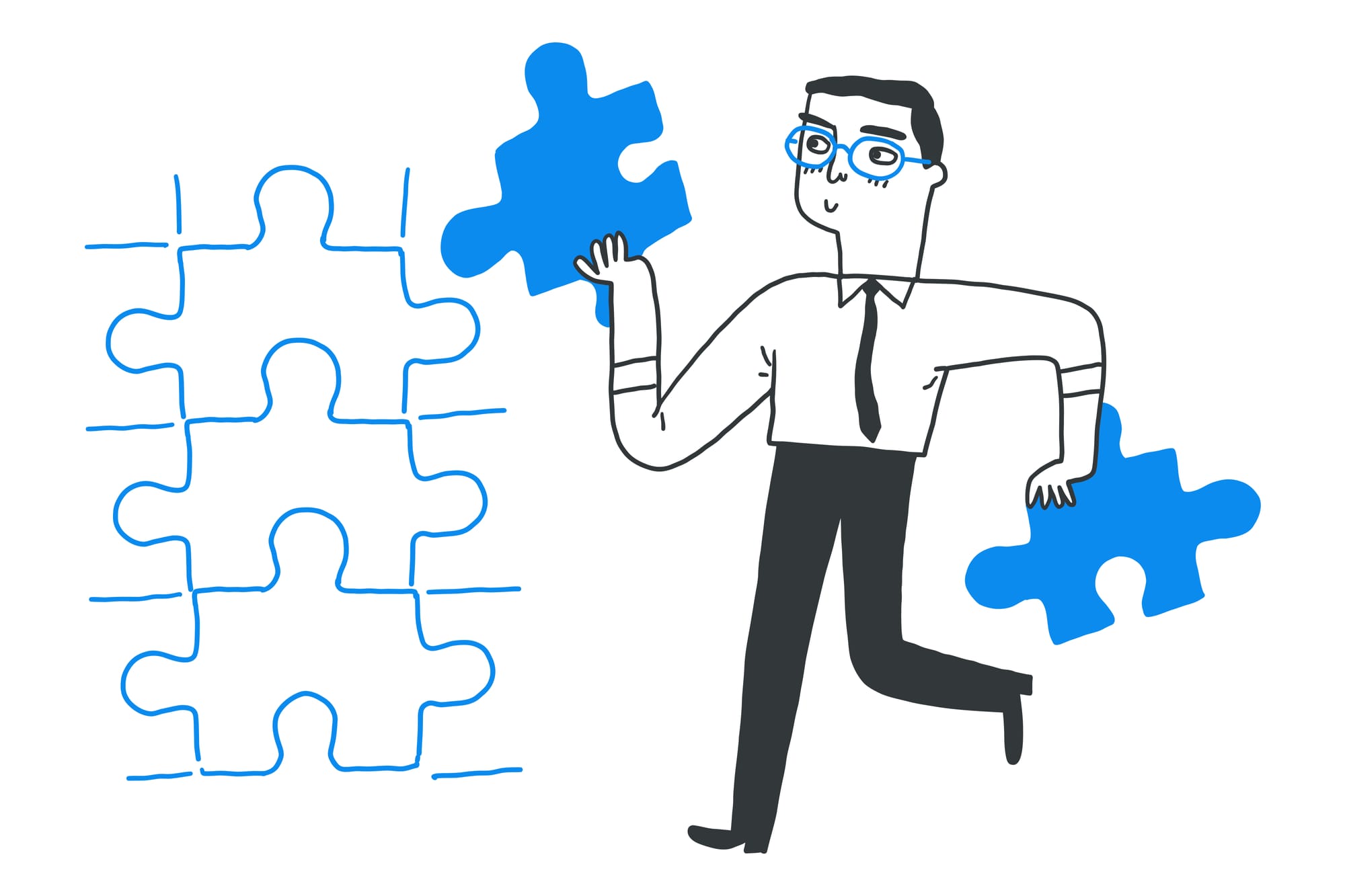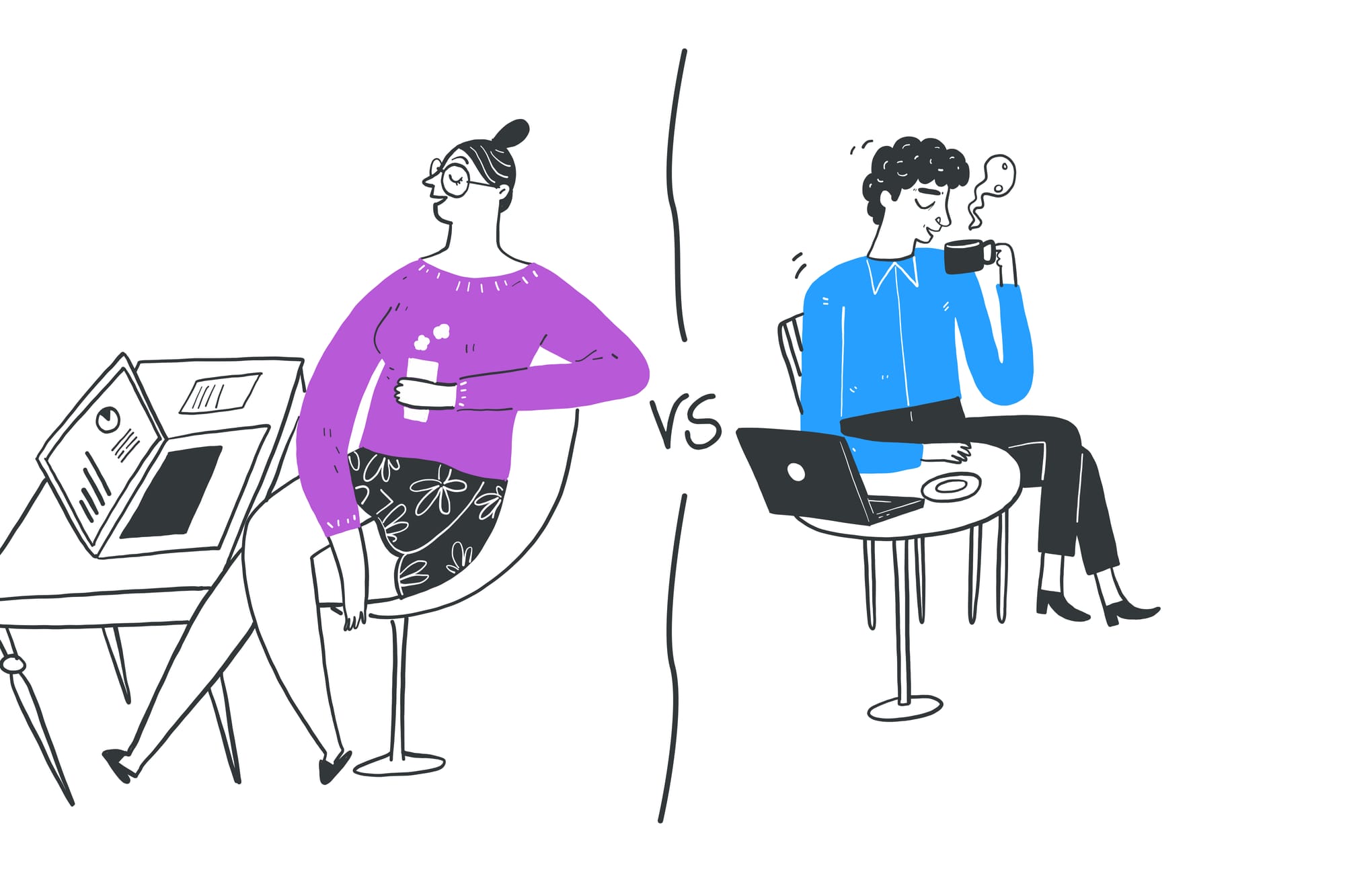Being on constant video calls with your developers can be pretty exhausting, especially if you have several meetings a day, and especially where your focus is innovation or problem-solving in software development.
This form of exhaustion actually has a name - it’s called "meeting fatigue," and it occurs when collaborating and teamwork become an all too common struggle. Scientists have even come up with the Zoom Exhaustion & Fatigue Scale for you to assess your team’s exhaustion threshold - I ain’t makin’ this up, it’s the real deal!
This blog post delves into the world of meeting fatigue within software development, shedding light on its impacts, causes, and practical strategies to ensure productive collaboration without sacrificing valuable development time.
What is Meeting Fatigue?
Meeting fatigue is a phenomenon that occurs when the frequency and length of meetings hinder rather than enhance productivity. This also includes video conferencing while working remotely, which can cause mental and physical exhaustion.
For software developers, whose work demands focused concentration and continuous problem-solving, excessive meetings can disrupt the flow and impede progress. Moreover, the constant context-switching required between coding and meetings can lead to decreased efficiency and increased stress.
What Are the Causes of Meeting Fatigue?
Several factors contribute to meeting fatigue within the software development realm:
Signal Issues
A buzzy signal, interference, babies crying, and other weird background noises. On video calls, these are sometimes difficult to pinpoint if there are many people on the call. In physical meetings, they can be resolved or don’t occur at all. When signal issues persist during sessions, then this could lead to meeting fatigue.
Not Getting Non-Verbal Cues
Video chatting also makes it difficult to pick up on non-verbal cues such as eye contact and facial expressions – elements crucial for comprehending someone else's emotions. The absence of non-verbal cues can lead to increased cognitive load as participants in the meeting try to compensate for the lack of visual context. This extra effort can contribute to meeting fatigue.
Overlapping Meetings
Overlapping meetings contribute to meeting fatigue by fragmenting a developer’s workday and attention. Constantly transitioning between multiple discussions not only disrupts the flow of focused work but also amplifies cognitive load.
As developers try to keep up with concurrent conversations, the ability to actively engage and contribute diminishes, leading to decreased efficiency, heightened stress, and an overall sense of overwhelming busyness.
This context-switching strain ultimately impedes meaningful collaboration and erodes the quality of interactions, exacerbating the detrimental effects of meeting fatigue.
Lack of Agenda
Meetings held without a clear agenda can contribute to meeting fatigue due to the lack of structure and focus. Without a predefined roadmap for discussion, participants often find themselves engaged in prolonged and unproductive conversations, leading to increased time spent in the meeting. At hay, when somebody talks too much about a trivial matter, we call it a 'pizza' 🍕. This gets them to get back on the subject.
The absence of a clear agenda also makes it challenging for attendees to prepare adequately, resulting in a sense of disorganization and frustration. As a result, participants may struggle to stay engaged and find value in the meeting, ultimately contributing to a sense of fatigue and inefficiency.
Non-essential Meeting Attendance
Participating in unnecessary video meetings contributes to the onset of meeting fatigue, stretching individuals' time and attention thin, ultimately diverting them from tasks that require concentrated effort and effective problem-solving.
Constantly being present in meetings that don't directly pertain to their responsibilities dilutes their effectiveness and diminishes their ability to contribute meaningfully, leading to frustration, decreased engagement, and a reduced capacity to prioritize critical tasks essential for productivity.
Lengthy Meetings
Long meetings contribute to meeting fatigue due to their prolonged duration, which can lead to a decrease in participants' engagement and attention span.
As meetings drag on, your developers may find it challenging to maintain their focus, leading to mental exhaustion and decreased productivity.
Also, long meetings interrupt developer flow, creating inefficiency and frustration. Pointless meetings can lead to diminishing returns in terms of meaningful contributions and can contribute to a sense of drain and disengagement, ultimately resulting in meeting fatigue.
Eye Fatigue
With our eyes constantly glued to screens, it’s no wonder we get tired of virtual meetings. This can develop into something called Computer Vision Syndrome, where you’re liable to strain your eyes, get blurred vision, headaches, and neck pain, reduced focus, discomfort, and decreased attentiveness.
Work-life Balancing Act
In this digital age, as our lives blur between work and leisure through laptops and smartphones, it’s impossible to actually be genuinely "unplugged."
Transitioning seamlessly from a professional video call to chatting with your grandma on the other side of the planet, all within the confines of a single device has become the new norm. And this has created a blurring between our professional and personal spheres. The result? Meeting fatigue.
How to Combat Meeting Fatigue?
Don’t Have Meetings
I’m not saying to do away with meetings altogether, especially if a majority of your developers work remotely. But if the meeting doesn’t require decision-makers or is just a check-in — put it in an email. Some companies even went as far as implementing No Meeting days.
Create Purposeful Agendas
Having a purposeful agenda is crucial in combating meeting fatigue because it provides structure, clarity, and direction to meetings.
When participants know exactly what topics will be covered, they can mentally prepare, stay focused, and contribute meaningfully.
A well-defined agenda helps avoid tangents and keeps discussions concise, reducing the risk of meetings running longer than necessary. This focused approach respects participants' time, enhances engagement, and minimizes the potential for information overload.
Ultimately, a purposeful agenda ensures that meetings are efficient, productive, and less likely to contribute to the exhaustion associated with meeting fatigue.
Make Attendance Non-essential
Invite only relevant team members to meetings, reducing time spent by those not directly involved. By keeping meetings small and with only the most critical stakeholders, you reduce distractions and the potential for meeting fatigue to flare up. Research even shows an inverse relationship between meeting attendees and the quality of the meeting.
Set Meeting Time Limits
Set specific time limits for meetings, encouraging concise discussions and preventing unnecessary digressions. When meetings stretch on for an hour or more, people burn out and productivity goes down for anything that needs to be done after the meeting.
Here’s what the Internet says about the ideal meeting length in software engineering:
- Standups should not exceed 15 minutes.
- Sprint Planning should not exceed 2 hours.
- Sprint Review Meetings should be about 45 minutes + 15 minutes for discussion.
- Sprint Retros should be 45 minutes for a one-week sprint.
- Brainstorming Meetings tend to last between 1 - 3 hours.
With regards to the average generic meeting length, the standard duration typically spans an hour. However, the optimal timeframe should be about 25 minutes based on the human ability to maintain focus.
According to Microsoft's research, fatigue occurs during video conferencing after approximately 30 to 40 minutes into a meeting.
Allow for Asynchronous Communication
Establishing asynchronous communication is one way of combatting meeting fatigue. This allows your developers to communicate and collaborate without the time constraints and interruptions of real-time meetings. For example, I regularly leave feedback for our developers and designers in brief Loom recordings.
With asynchronous communication, developers can address tasks and discussions at their own pace, eliminating the need for back-to-back meetings that often disrupt focused work.
This approach empowers team members to manage their schedules more efficiently, engage in deep work without constant context-switching, and contribute thoughtfully to discussions without the pressure of immediate responses.
Regularly Review Your Meetings
You could assess the effectiveness and necessity of each meeting. By evaluating things like objectives, outcomes, developer engagement, and time spent, you can identify patterns of inefficient or redundant meetings.
This review process empowers you to make informed decisions about which meetings are essential and how to optimize their structure and frequency. By eliminating unnecessary meetings and refining those that remain, you can reduce the cognitive load on participants, enhance overall productivity, and alleviate the strain that contributes to meeting fatigue.
Take Your Meetings to the Pub
Just kidding! Or maybe not? 🍺 One way of eliminating meeting fatigue is to organize regular after-hour events. You and your colleagues can unwind and connect on a more personal level, and maybe sneak in a few work-related topics to discuss in a casual way.
Apart from getting some fresh air, your body will also thank you as your blood pressure, heart rate, and physical tension decrease. Your work culture also improves.
One good reason to take it outside is that people also have a hard time establishing personal connections in a remote environment.
Take Breaks During the Workday
Close your laptop and put away your phone. With breaks away from electronics, your developers can recharge, refocus, and alleviate the strain caused by continuous engagement and too much screen time.
Taking regular breaks also allows you to rest your eyes, reduce mental strain, and prevent cognitive overload. You can also stretch, move around your arms and legs, or go for a short walk to refresh your mind.
These pauses not only enhance overall wellbeing but also help maintain attentiveness and productivity during subsequent meetings, effectively countering the draining effects of prolonged virtual interactions.
Give Camera-off Meetings a Try
In 2021, a study conducted by the University of Arizona showed that participating in virtual meetings with the camera turned on is more fatiguing compared to keeping it off.
Having your camera on during video conferencing can be fatiguing because of worries related to self-perception, background distractions, privacy issues, potential technical glitches, fear of judgment, and the feeling of being observed, among many other factors.
Conclusion
Remote tools alleviate one problem, but create others, like meeting fatigue. In software development, meetings are particularly challenging and demand attention and adaptation. When your developers crack the code of striking a balance between collaboration and focused work, they innovate and collaborate effectively.
Once you wrap your head around meeting fatigue, understand its root causes, and implement strategies to fight it, then your developers become productivity wizards, delivering high-quality features while maintaining their sanity and work-life balance.🪆





